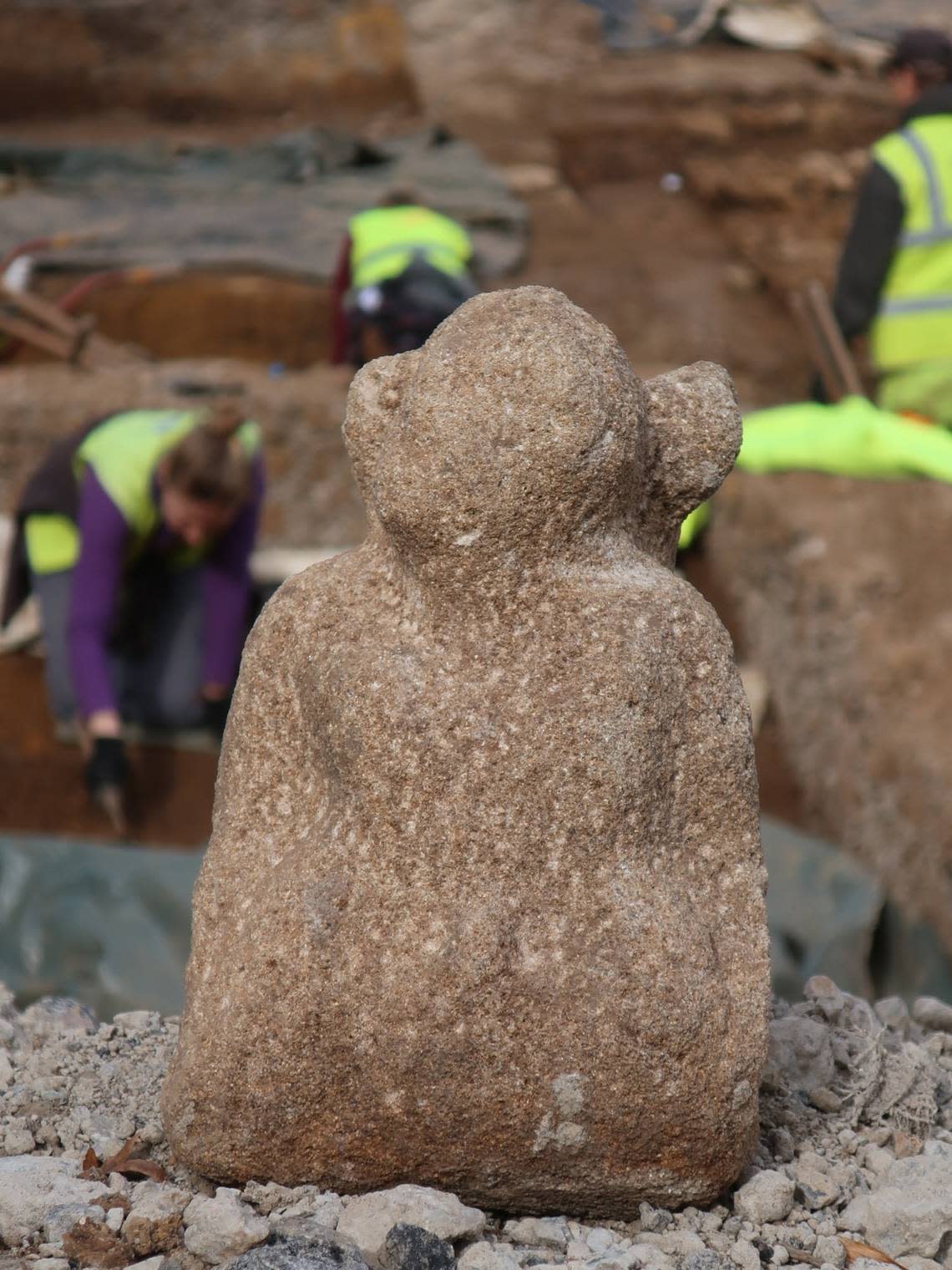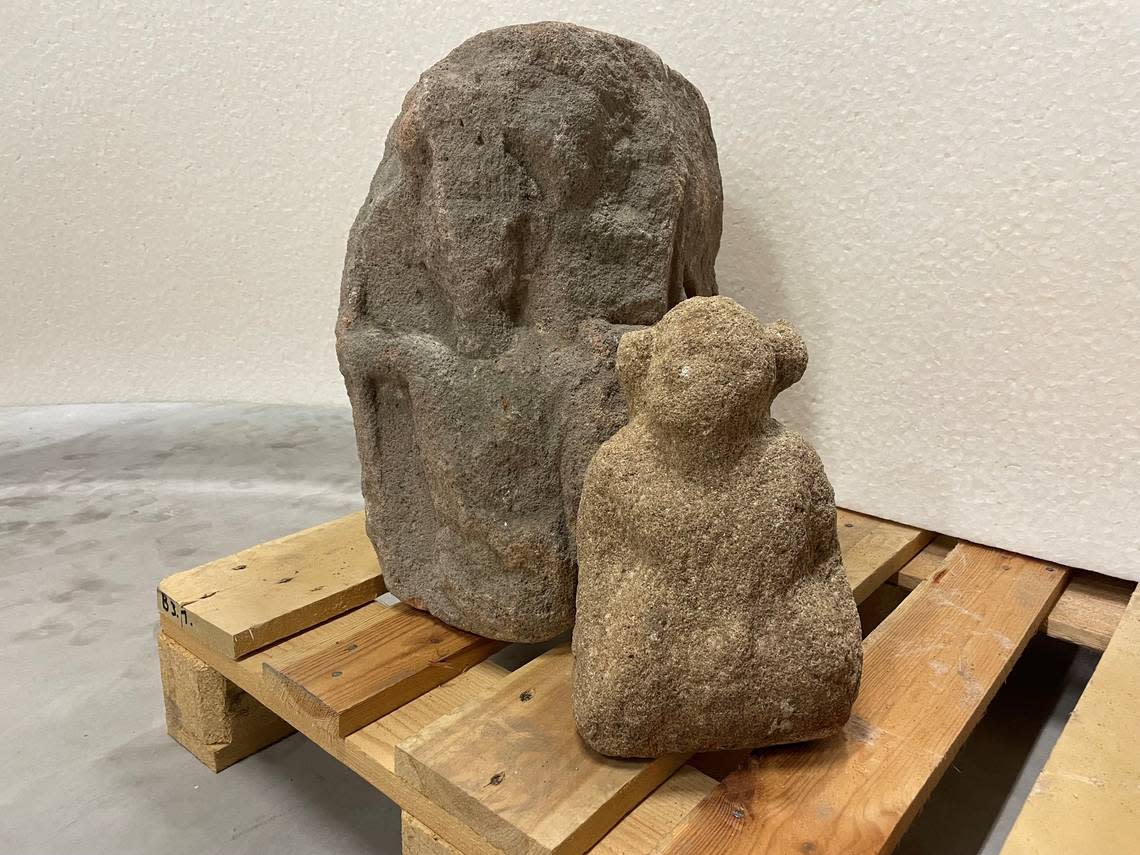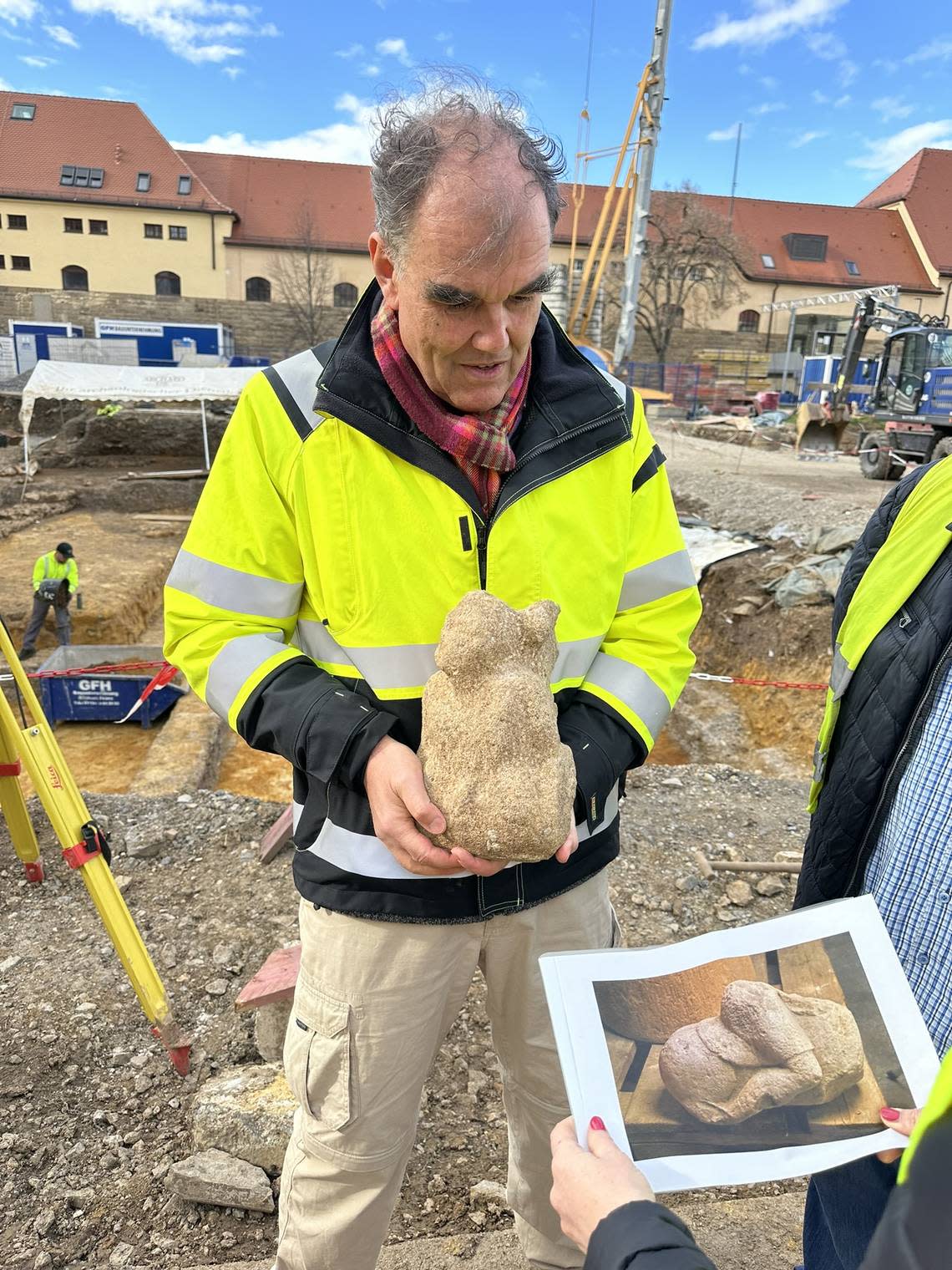Worker spots muddy lump — and solves 116-year-old puzzle. See the ancient Roman find
They called it the Four Gods Stone. A dark brown rock shaped by a carver and weathered by the centuries, it depicted four ancient Roman deities: Hercules, Juno, Mercury and Minerva.
In Roman times, the stone once sat atop a prominently placed pillar, known as a Jupiter column, but archaeologists found it buried in Stuttgart, Germany, in 1908.
Ever since, the Four Gods Stone sat in a museum. The rest of the ancient Roman column it belonged to was gone — at least, that’s what archaeologists thought until recently.
Excavations began at a site in Stuttgart ahead of the construction of a school, the Stuttgart Regional Council said in an April 19 news release. The site had been an ancient Roman fort, then expanded into a settlement about 1,800 years ago.
An archaeologist working at the site noticed a muddy lump near the edge of the excavation area, officials said. The lump turned out to be an ancient Roman carving.

Uncover more archaeological finds
What are we learning about the past? Here are three of our most eye-catching archaeology stories from the past week.
→ Farmer loses plow part in Polish field — then finds historic artifact during search
→Divers remove ancient Roman cargo from shipwreck — and find unique carvings. See them
→ Metal detectorists find ancient portrait in Danish field. See the 'legend' it depicts
A photo shows the worn, roughly foot-tall carving. The part-human, part-snake figure is depicted kneeling with its hands at its sides, archaeologists said. Its head is human-like, but its lower body morphs into a snake-like animal.
Archaeologists identified the 1,800-year-old carving as a “giant,” a hybrid creature from Roman and Germanic mythology, and part of the same Jupiter column as the Four Gods Stone. A photo shows the two stones sitting side-by-side.

The “giant” carving might have been buried near to the Four Gods Stone and simply gone overlooked during previous excavations, archaeologist Andreas Thiel said in the release.
The artifact helps solve a 116-year-old puzzle to reconstruct the ancient Roman pillar that once stood in modern-day Stuttgart, officials said.

Excavations at the site are ongoing. Stuttgart is a roughly 400-mile drive southwest from Berlin.
Google Translate was used to translate the news release from the Stuttgart Regional Council.
Ancient Roman graveyard — with over 1,400 tombs — unearthed in France. Take a look
Ancient musical instruments unearthed in China tomb — with someone’s name. See them
‘Unique’ 500-year-old chest — intended for battle — found on shipwreck in Sweden
